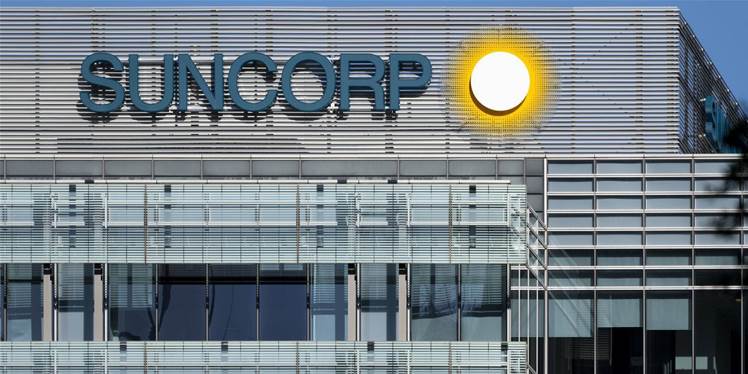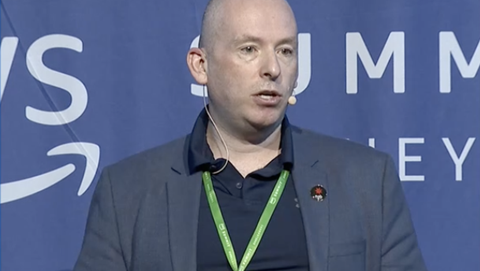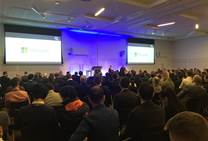Suncorp Group has set a target to exit owned or leased data centres by early 2024, with 90 percent of workloads destined for public cloud and 10 percent for a hybrid cloud environment hosted “in close proximity” to its chosen public cloud infrastructure.

Executive general manager of technology infrastructure Charles Pizzato told the iTnews Podcast that the group has “set a very clear ambition around where we want to be in terms of our technology environment by early 2024”.
That ambition is to run largely in the cloud, with applications either virtualised or containerised, with few exceptions.
Some of the foundations for this move were laid close to a decade ago when, in 2013, Suncorp used AWS re:Invent as the stage to declare its cloud intent, at least initially.
It has since gone on to have 65 percent of its workloads and applications hosted in the public cloud, now a mix of AWS and Azure, and Kyndryl’s zCloud and pCloud.
Much of the next 25 percent of workload candidates destined for public cloud are either already virtualised (using VMware), or are set to be re-architected and containerised with Red Hat OpenShift.
The remaining 10 percent are, Pizzato says, “the sort of things that you can't move to a public cloud environment.”
These will largely end up in “a hybrid cloud environment, sitting in colocation facilities in Sydney, within very close proximity to the hyperscalers so it's fully integrated to the workloads that we host in the public cloud,” Pizzato said.
Examples of such workloads are Suncorp’s core lending platform, which sits on an Oracle Private Cloud Appliance stack. It’s a similar story for workloads that use the group’s IBM pSeries POWER hardware.
“Some of those workloads can't sit on x86 public cloud infrastructure,” Pizzato said.
Still, this is a relatively small proportion of total applications and workloads, and won’t stand in the way of Suncorp achieving a new target endstate for its infrastructure and IT operating model as a whole.
“We've seen that we've been able to operate environments very effectively in the cloud and over time, it's become more and more mature, and in some respects, I think, a commodity,” Pizzato said.
“We're at a point now that the reasons for operating your owned and leased data centres are no longer as attractive.”
“We've set a ‘flag on the hill’ declaring that by early 2024 at Suncorp, we will no longer have any owned or leased data centres, and we will be operating in the public cloud with a small number of workloads remaining in colocation facilities.”
Migrating VMs to Azure
To move from the current 65 percent of workloads in public cloud up to 90 percent will involve the use of several migration strategies - and, more specifically, sets of technology tools.
Pizzato said that the “majority” of remaining data centre workloads are virtualised with VMware technology; these VMs are set to be re-hosted in the public cloud.
“Suncorp is already heavily virtualised, allowing us to take advantage of technology to perform the migrations to the Cloud services as we would on premise between clusters,” Pizzato said.
“We're going to be using platforms like Microsoft's AVS [Azure VMware Solution], and VMC [VMware Cloud on AWS].
“We're moving non-production workloads and even production workloads up to the cloud using this technology, only dropping a couple of packets as live workloads are migrated, and that just makes you really think differently about how rapidly you can perform migrations of VMware platforms or virtual machines up to the cloud.”
Pizzato said the first virtualised workloads were moved to Azure “about a year ago”.
For some workloads, migrating them to AVS allowed Suncorp to access “offers that Microsoft provided around extended support.”
“We did that [migration] because it made sense for those specific workloads to move them up,” he said.
He added that Suncorp had made a specific decision to use AVS first, over other VMware cloud options.
“We've taken advantage of [AVS] very quickly after it became available in the Australian Azure zones.”
OpenShift adoption
Other workloads - are being coded (or refactored) to be more cloud-native, making use of a microservices and container-based architecture.
The tooling used to run and manage this part of the project is Red Hat OpenShift, and Suncorp is consuming as-a-service versions on both AWS and Azure.
AWS’ version is called Red Hat OpenShift Service on AWS - shortened to ROSA. The Azure flavour of this is Azure Red Hat OpenShift, or ARO.
Pizzato said one of the advantages of running in OpenShift across multiple clouds is it enables workload portability between clouds.
More than anything, it adds competitive tension into Suncorp’s new infrastructure environment, and means the days of lock-in are gone.
At a more base level, the use of containerisation is intended to help Suncorp’s developers to “jumpstart building software”.
“They can ‘jumpstart’ by having an image that is already integrated to the various different platforms we have at Suncorp and is operating in a highly optimised environment. They don't have to think about the traditional [provisioning]: build a server, request firewall, add storage, connect to a database - all of that complexity is already taken care of for them,” Pizzato said.
Suncorp’s next-generation pricing engine, CaPE, is an example of a new application that has been built to be cloud-native and is containerised via OpenShift.
“We have our next generation pricing engine we recently built on OpenShift in AWS, and it will be moving to the ROSA platform very shortly,” Pizzato said.
Another new application, also hosted in OpenShift, is the @myOfficeApp leveraging PlaceOS technology which Pizzato described as “the brain of our new headquarters for the Suncorp Group at 80 Ann Street in Brisbane”.
“It controls 28 different technology patterns in this building, and the surrounding environmental elements of the building,” he said.
“All of that is sitting on OpenShift.”
Challenging workloads
Pizzato said that a handful of workloads in this wave of cloud migrations would be particularly challenging to move as-is - and therefore alternative options are in play.
The group’s Genesys contact centre platform, which is used by about 10,000 agents, is currently hosted on-premises and “isn't something you just pick up and move to the cloud.”
We're going to take advantage of the opportunity to move that into a SaaS ‘evergreen’ platform in the cloud,” Pizzato said.
“Obviously, there's some work to do around how we get that there. That's one of the more challenging migrations.”
He added that “some of our more critical banking and treasury systems are also still to be completed as part of this next program wave.”
Subscribe to The iTnews Podcast at Apple Podcasts, Google Podcasts, Spotify, Amazon Podcasts or wherever else good podcasts are found. New episodes will be released every Monday.























